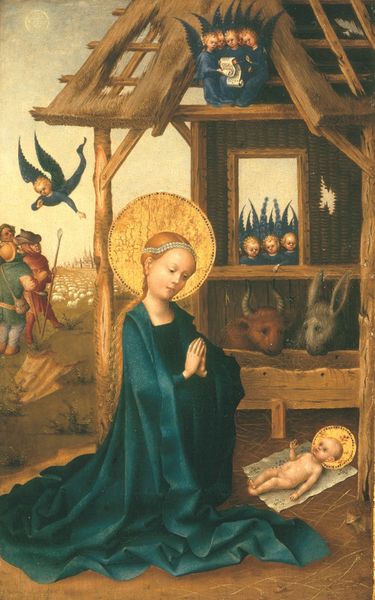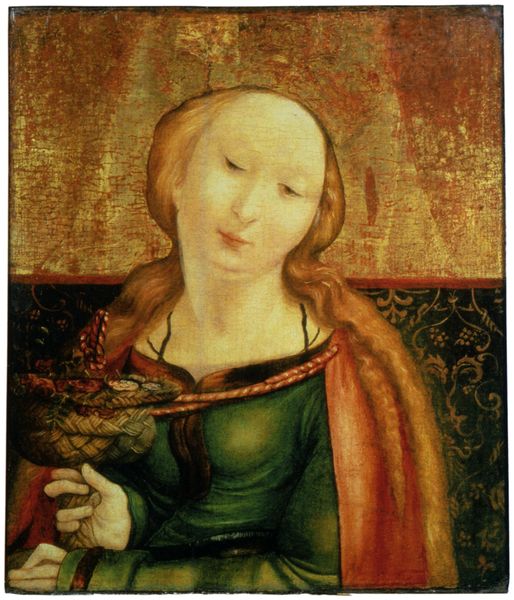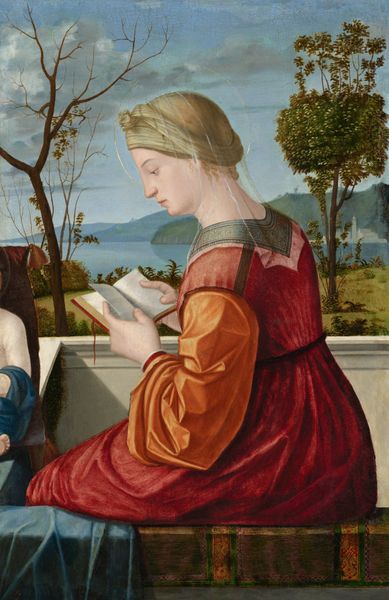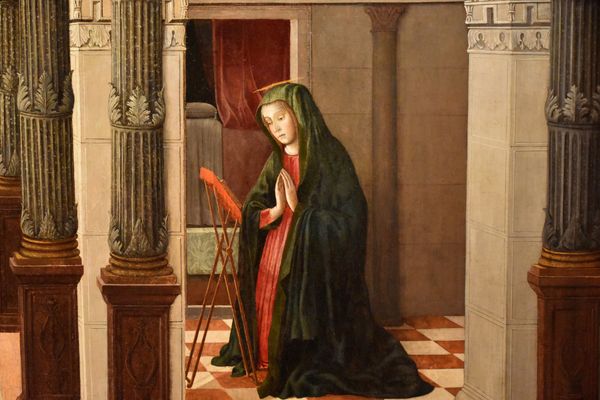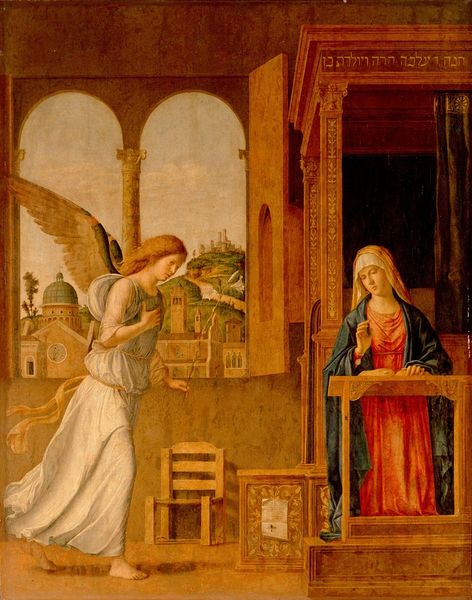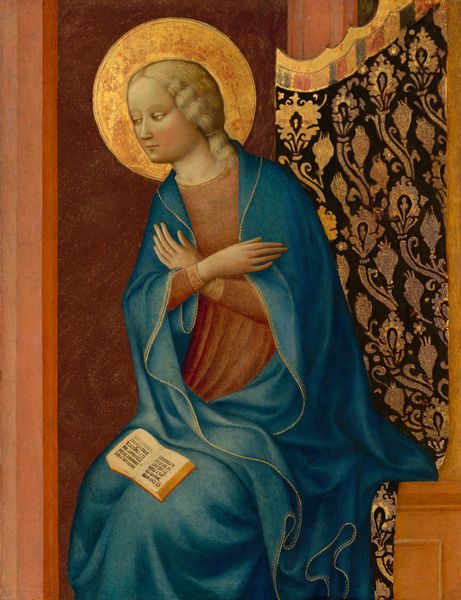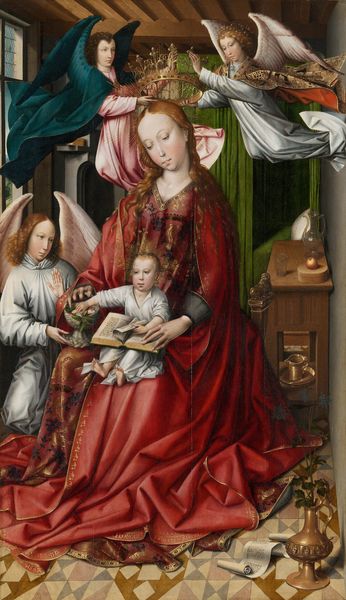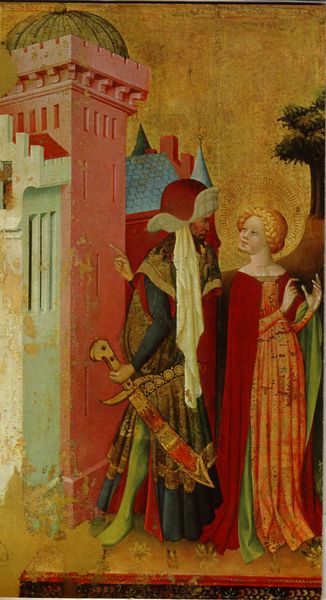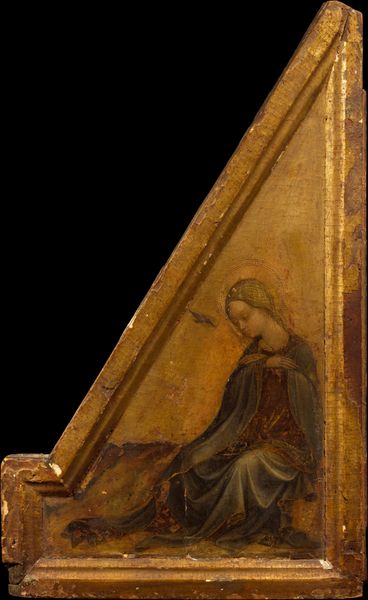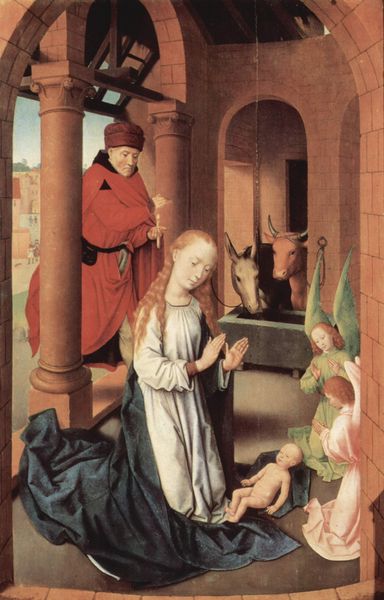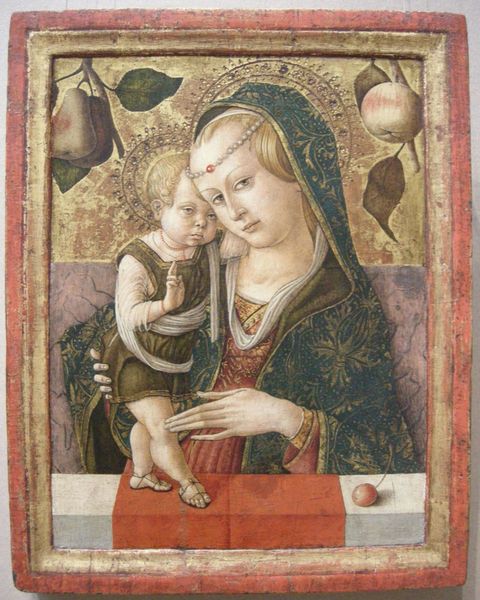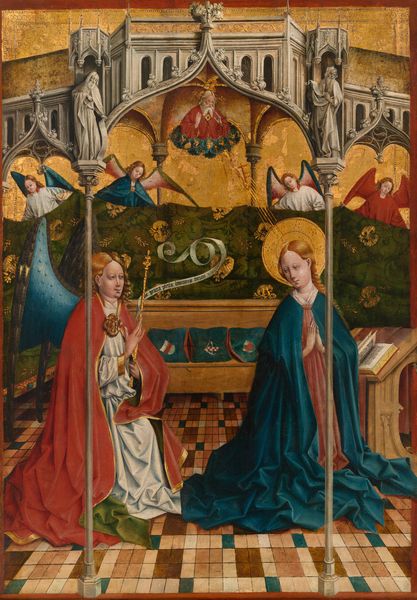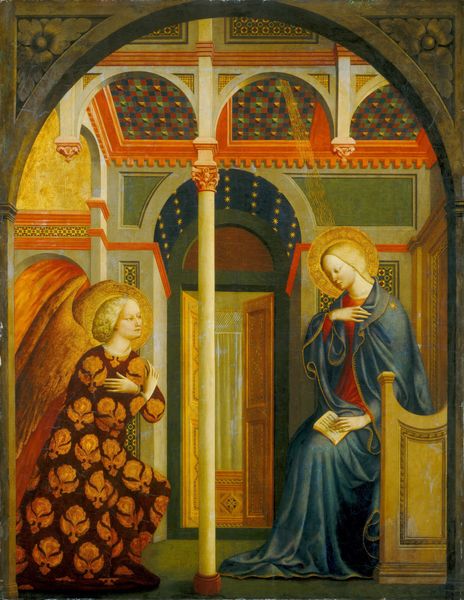
tempera, painting, oil-paint
#
portrait
#
medieval
#
tempera
#
painting
#
oil-paint
#
oil painting
#
christianity
#
painting painterly
#
history-painting
#
facial portrait
#
italian-renaissance
#
portrait art
#
virgin-mary
#
fine art portrait
#
christ
Copyright: Public domain
Carlo Crivelli painted this Annunciation sometime around 1486, using tempera and oil on wood. It’s worth considering the material properties of these choices. Tempera involves mixing pigment with egg yolk, a technique demanding precision. The quick-drying nature of tempera requires artists to work in small sections, building up the image layer by layer. Then, the addition of oil paint gives the painting its characteristic luminosity, allowing for richer colors and smoother transitions. In Crivelli's time, the mastery of tempera and oil paints involved a lengthy apprenticeship, often within a family workshop. The creation of pigments also required specialized knowledge and access to rare materials, reflecting a society where artistic skill was deeply intertwined with economic structures. The smooth surface and intricate details would not have been possible without a high degree of collaboration. So, next time you look at a painting like this, think about the ways in which these materials were sourced and combined, and what that tells you about the culture that produced it.
Comments
No comments
Be the first to comment and join the conversation on the ultimate creative platform.
